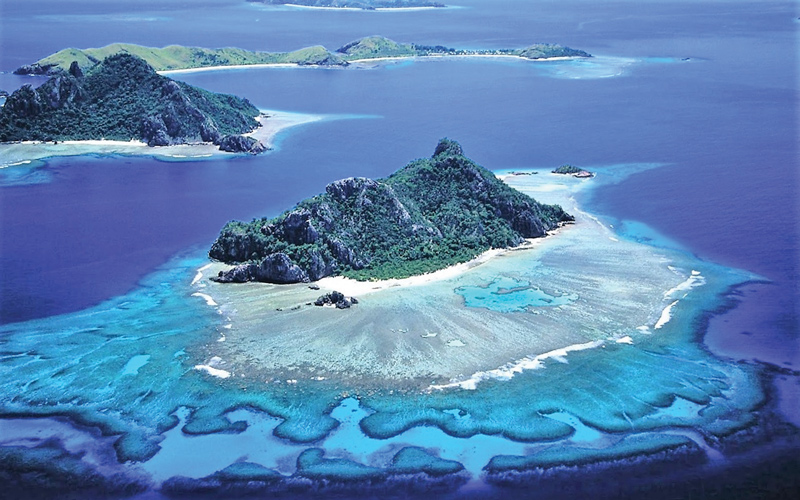Galapagos
The Galapagos is a once in a lifetime adventure for many travelers,

especially those seeking nature and wildlife.
Arguably, there is no place like the Galapagos Archipelago, a collection of 13 main islands and seven smaller islands situated approximately 600 miles off the coast of Ecuador in South America. These volcanic islands are millions of years old yet they continue to intrigue the modern, and often times, the intrepid traveler.
“It’s definitely one of those bucket list destinations for certain people,” says Oliver Lever, head of Americas and Polar Regions for Lightfoot Travel, a tour operator based in Singapore. The typical Galapagos itinerary, if there is one, is seven to 10 days. For the U.S. market, it includes two days in Quito, Ecuador, on the mainland, and seven days in the islands. European trips tend to be longer, at two weeks.
Activities
Viewing wildlife – sea lions, penguins, iguanas, flamingos, fur seals, sea turtles, giant tortoises, blue-footed boobies, and albatrosses – ranks high on the list of things to do in the Galapagos. Whether snorkeling, kayaking, paddle boarding, hiking, or heading into the water by Zodiac, getting close to the natural world is paramount. “You’re very much amongst the wildlife,” says Lever, who is British by birth but is based with his wife, and son, in New York City.
But beyond the wildlife, geography, and storied history of the Galapagos, traveling to a relatively remote destination has its own appeal. Well-known for their exploration by Charles Darwin in 1835, the islands are home to diverse plant and mostly amphibious animal life. For those who like adventure, these islands will satisfy any Robinson Crusoe urge.
The archipelago is situated mostly south of the Equator though parts of some islands are north of it. Whether your itinerary is the eastern or the western Galapagos, you’ll see mostly the same wildlife, Lever says. However, the western islands “feel a bit more intrepid.”
Best Time & Way To Go
Cruises in the Galapagos are scheduled throughout the year, yet the ideal time to visit is during summer in the Southern Hemisphere. “If you can, go in December through June,” Lever says. “There are tiny amounts of rain and it’s the warmest time of year. The water is warmest.” In addition, you’re likely to see more wildlife in summer as it is mating season for many species, he says.
If you travel during cooler periods, you can wear a wet suit to the knees and elbows for water activities. Late September through October can be “quite misty,” Lever says. “It’s not the ideal time to go.”
To see as much as possible, a cruise or smaller vessel trip is recommended. “The best way to see it is by boat,” Lever says. “Snorkeling is one of the main things to do there.”
A number of lines cruise the Galapagos including Silversea, Celebrity, Lindblad Expeditions, Aqua Expeditions, and Disney. Typically, boats or yachts in the Galapagos include no more than 100 passengers, and many times, far fewer. Which way to go depends on the traveler. Among the newest options is to take a catamaran with just 16 passengers, Lever says.
Travelers can opt for a land-based trip as well. “Snorkeling isn’t for everyone,” Lever says. “Some clients are not comfortable in the water.” Other options are to stay overnight in land accommodations, and explore by Zodiac, and choose hiking as well. “ Another way to explore the islands is by kayak or by paddle board in some places.
Itineraries
Since it can be an expensive trip, choosing the right ship, itinerary, and suitable activities is important. Trips that are five-to-seven nights can range in price from $5,000 to $6,000 per person to approximately $20,000. Typically, the more luxurious the ship, the higher the price.
Galapagos travelers often research themselves before deciding on a trip so they know what they want to see, and can thoughtfully choose an itinerary that will meet their expectations.
“Choosing the right ship for the itinerary and budget, and suitable activities” is essential, Lever says. For example, if you are hiking more than snorkeling, ask if the hikes are easy, moderate or challenging. For a land-based trip luxury accommodations or boutique hotels are available. For an island-hopping experience, there are small planes that accommodate six to eight passengers, Lever says.
Highlights of Various Islands
Santa Cruz Island: The main tourism hub, near the airport on Baltra Island to the north, Santa Cruz is centrally located and the second largest of the islands after Isabela Island. With a population of 12,000, Santa Cruz is home to the Charles Darwin Research Station. Explore nearby Chinese Hat Island and Santiago Island to snorkel among the penguins and sea lions.
Espanola Island: There is no human population on this southernmost island. It’s a place to view marine iguanas, masked and blue-footed boobies, and waved albatrosses at Punta Suarez. Visit Gardner Bay’s white-sand beach and sea lion colonies.
Isabela Island: This seahorse-shaped island, is home to tortoises – both hatchlings and older breeding ones – at the Tortoise Center of Isabela. With a popular of 1,800, mostly farmers, fisherman, and those working in tourism, Isabela Island is the largest of the Galapagos Islands, with a greater land mass than all the others combined.
Floreana Island: Visit the flamingo lagoon to catch a view of Galapagos Flamingos wading. Check out a green sand beach and one made of pulverized coral. Watch pintail ducks, green sea turtles, and several species of finch. The human population is but 100.
To learn more about the individual islands, the Galapagos Conservancy Website includes an island-by-island guide, www.galapagos.org/about_galapagos/the-islands




